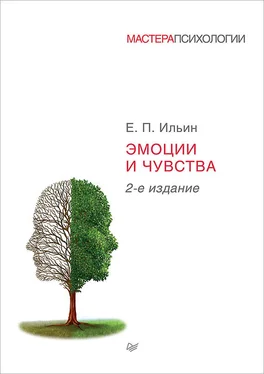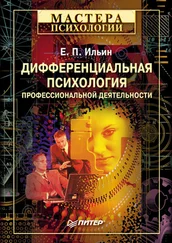Freud A. The age and the mechanisms of defence. N.-Y., 1946, 252 p.
Freud S. Inhibitions, symptoms and anxiety // J. Strackey (ed.). The standard edition of the complete psychological works of Sigmund Freud. London, Hogarth Press, 1959, v. 20, p. 77–175.
Freud S. The neuropsychoses of defense // S. E., 1894, 3, p. 43—61.
Freud S. The ego and the id. Standard Edition (v. 18). London, Hogarth Press, p. 12—66.
Fridlund A. J., Schwartz G. E., Fowler S. C. Pattern recognition of self-reported emotional state from multiple-site EMG activity during affective imagery // Psychophysiology, 1984, v. 21, № 6, p. 622—637.
Frijda N. H. The emotions. Cambridg, England, 1986.
Frijda N. H. The law of emotion // American Psychologist, 1988, v. 43, p. 349—358.
Frieze I. H., Olson J. E., Russell J. Attractiveness and income for men and women in management // J. of Applied Social Psychology, 1991, v. 21, p. 1039—1057.
Frois-Wittmann J. The judgment of facial expression // J. of experim. Psychology, 1930, v. 13, № 2, p. 113—151.
Frois-Wittman J. The judgment of facial expression // Recognition of facial expression. N.-Y., Arnopress, 1976, p. 107—117.
Fujita F., Diener E., Sandvik E. Gender differences in negative affect and well-being: The case for emotional intensity // Journal of Personality and Social Psychology, 1991, v. 61, p. 427—434.
Funder D. C., Dobroth K. M. Differences between traits: Properties associated with interjudge agreement // J. of Personality and Social Psycholoogy, 1987, v. 52, p. 409—418.
Galagher D., Sheentich R. Encoding and decoding of nonverbal behavior through facial expression // J. Res. Pers., 1981, v. 15, № 2, p. 241—252.
Galati D., Miceli R., Sini B. Judging and coding facial expression of emotions in congenitally blibd children // International Journal of Behavioral Development, 2001, v. 25 (3), p. 268—278.
Gardner H., Zing P. K., Flamm Z., Silverman J. Comprehension and appreciation of humorous material following brain damage // Brain, 1975, v. 98, p. 399—412.
Gass K. A. Aged widows and widowers: Similarities, and differences in appraisal, coping, resourses, type of death, and health dysfunction // Archives of Psychiatric Nursing, 1988, v. 2, p. 200—210.
Gellhorn E . Motion and emotion. The role of proprioception in the physiology and pathology of the emotions // Psychol. Rev., 1964, 21, № 6, p. 457—472.
Gianotti G. Reactions «catastrophiques» et manifestations d’indifference au cours desatteintes cerebrales // Neuropsychol., 1969, v. 7, p. 195—204.
Glatt M. M. Problems common to alcoholism and drug dependence // Whochron., 1967, v. 21, p. 293—303.
Goffman E. The Presentation of Self in Everyday Life. London, Penguin Press, 1967.
Goleman D. Emotional intelligence. N.-Y., Bantam Bookws, 1995.
Goodenough F. L. Anger in young children. Minneapolis Univ. Press, 1931.
Gottman J. M . How children becom friends // Monographs of the Society for Research in Cild Development, 1983, 48 (3).
Graf O. Zur Frage der Monotonie der Arbeit und ihrer Bekampfung // Arbeitsphysiologie, 1944, № 13 (95).
Graham S. Children’s developing understanding of the motivational role of affect: An attributional analysis // Cognitive Development, 1988, v. 3, p. 71—88.
Gravis R., Landis D., Goodglass H . Laterality and sex differences for visual recognition of emotional and nonemotional words // Neuropsychology, 1981, v. 19, № 1.
Gray J. A. The psychology of fear and stress. N.-Y., 1971.
Gray J. A. Three fundamental emotion systems // P. Ekman, R. J. Davidson (eds.). The nature of emotion: Fundamental questions, N.-Y., Oxford University Press, 1994.
Graziano W., Brothen T., Berscheid E. Height and attraction: Do men and women see eye-to-eye? // J. of Personality, 1978, v. 46, p. 128—145.
Green D. P., Goldman S. L., Salovey P. Measurement error masks bipolarity in affact ratings // J. of Personality and Social Psychology, 1993, v. 64, p. 1029—1041.
Greenwald A. G., Banaji M. R. Implicit social cognition: Attitudes, self-esteem, and stereotypes // Psycholoogical Review, 1995, v. 102, p. 4–27.
Griffin S. A cognitive-developmental analysis of pride, shame, ans embarrassment in middle childhood // J. P. Nangney, K. Fisher (eds.). Self-conscious emotions: The psycology of shame, guilt, embarrassment, and pride. N.-Y., Guilford Press, 1995.
Griffiths P. E. What emotions really are: The problem of psychological categories. Chicago, University of Chicago Press, 1997.
Gross J. J., John O. P. Facets of emotional expressivity: Three self-report factors and their correlates // Personality and Individual Differences, 1995, v. 19, p. 555—568.
Grossman S. P. Modification of emotional behavior by intercranial administration of chemicals // P. Black (ed.). Physiological Correlates of Emotion. N.-Y., 1970.
Gubser A. Monotonie im Industriebetrieb. Bern und Stuttgart, 1968.
Guerrero L. K., Eloy S. V. Relational satisfaction and jealousy across marital types // Communication Reports, 1992, v. 5 (1), p. 23—31.
Gugenheim C. Etude experimentale des aspects objectifset subjectifs de la fatique pendant un travel monotone // Le Travail Humain, 1953, XVI, № 3–4.
Guilford J. P. Personality. N.-Y., 1959, Ch. 16.
Gupta U., Singh P. Exploratory study of loveand liking and type of marriages // Indian Journal of Applied Psychology, 1982, v. 19, p. 92—97.
Haggard E. A., Isaacs K. S. Micromomentary facial expression: An indicators of ego mechanisms in psychotherapy // Gottschalk L., Auerbach A. (eds.). Research in psychotherapy. N.-Y., 1966, p. 154—165.
Haggard M. P., Parkinson A. M. Stimulus and task factors as determinants of ear advantages // Quarterly J. of experim. Psychol., 1971, v. 23, part 2, p. 168—177.
Haith M. M., Campos J. J. C. Human infancy // Ann. Rev. Psychol., 1977, v. 28, p. 274—293.
Hall J. Nonverbal Sex Differences: Communication accuracy and expressive style. Johns Hopkins University Press. Baltimor, MD, 1984.
Hall J. A., Carter J. D., Horgan T. G. Gender differences in nonverbal communication of emotion // A. H. Fisher (ed.). Gender and Emotion. Paris, Cambridge University Press, 2000, p. 97–117.
Haner C. F., Whitney E. Empathic conditioning and its relation to anxiety level // Americ. Psychologist, 1960, v. 15, № 493 (Abstract).
Hansen C. A causal model of thye relationship between accidents, niodata, personality and cognitive factors // J. of Applied Psychology, 1989, v. 74, p. 81—90.
Harburg E., Roeper P., Ozgoren F. et al. Handedness and temperament // Perceptual and motor skills, 1981, v. 52.
Harknes A. R., Tellegen A., Waller N. Differential convergence of self-report and informant data for multidimensional personality questionnaire traits: Implications for the construct of negative emotionality // J. of Personality Assessment, 1995, v. 64, p. 185—204.
Harman D. W., Ray W. J. Hemispheric activity during affective verbal stimuli: an EEG study // Neuropsychologia, 1977, v. 3, p. 457—460.
Harmon-Jonews E., Allen J. B. Anger and frontal brain activity: EEG asymmetry consistent with approach motivation despite negative affective valence // J. of Personality and Social Psycholoogy, 1998, v. 74, p. 1310—1316.
Harms E. A differential concept of feeling and emotions // M. L. Reymert (ed.). Feeling and emotions. The Moosehart symposium. N.-Y., Hafner Publishing Company, 1967.
Читать дальше
Конец ознакомительного отрывка
Купить книгу












